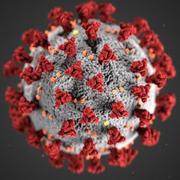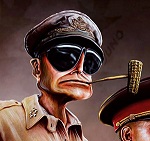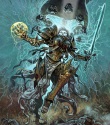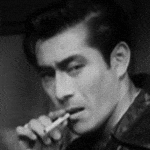|
Ensign Expendable posted:A good hefty brick of HE delivered in whatever form factor you can muster. Usually an RPG-40 is called this, but the principle survives to this day. What was the etymology of the phrase? Molotov is well known but this is the first I have heard of Voroshilov's Kilogram.
|
|
|
|

|
| # ? May 23, 2024 23:33 |
|
PittTheElder posted:Why did it take so long for muskets with bayonets to replace pike in big infantry formations? Was it the ease of manufacture of the pike? That's part of it. gently caress, the confederacy manufactured some pikes during the bad, end phases of the ACW just because they were so damned cheap and it was a quasi-effective thing for way rear echelon police, at least adequate for drilling, etc. Also a gun with a bayo on it makes a lovely pike. It's better at being a hand-to-hand weapon than just a gun, but when you're still in an era where pikes are needed to keep dudes with swords and horses etc over *there* while you fiddle with your finicky early firearm you still want someone with a proper long as gently caress pike and the training to use it. Plus, even the longest musket plus bayo isn't as long as a pike. Basically the guns just weren't mature enough as a piece of technology to stand alone.
|
|
|
|
Xerxes17 posted:What was the etymology of the phrase? Molotov is well known but this is the first I have heard of Voroshilov's Kilogram. No idea how the term came about, I don't think Voroshilov had anything to do with the RPG directly, nor does the total mass or the HE mass equal a kilogram.
|
|
|
|
HEY GAL posted:I'm still not super sure how long it took them to invent the bayonet in the first place. People mention the word in the mid 1600s, but it's unclear what it refers to. The timeline that we know about is as follows: By the 1680s we have the plug bayonet, the drawbacks of which are obvious. Some French dude invents the socket bayonet in the late 70s and it isn't widely used. The Germans and the English start using it widely after 97, and in '03 the French invent a thing that keeps them from falling off the muskets by accident. About 20 years isn't that long a time, the question is when it was invented to begin with. Which I don't know. So how do you get a plug bayonet out of your musket? Just pull really hard on the few not-sharp bits?
|
|
|
|
Slaan posted:So how do you get a plug bayonet out of your musket? Just pull really hard on the few not-sharp bits? Very carefully and probably not during a battle.
|
|
|
|
Cyrano4747 posted:Basically the guns just weren't mature enough as a piece of technology to stand alone. HEY GUNS fucked around with this message at 06:09 on Feb 19, 2015 |
|
|
|
Slaan posted:So how do you get a plug bayonet out of your musket? Just pull really hard on the few not-sharp bits? Fire the musket. 
|
|
|
Ensign Expendable posted:No idea how the term came about, I don't think Voroshilov had anything to do with the RPG directly, nor does the total mass or the HE mass equal a kilogram. The RPG-41 looks vaguely like a flask, but the vodka ration was only 100g. Hm.
|
|
|
|
|
Ensign Expendable posted:No idea how the term came about, I don't think Voroshilov had anything to do with the RPG directly, nor does the total mass or the HE mass equal a kilogram. Maybe it came from his stint in commanding the defense of Stalingrad.
|
|
|
|
Ensign Expendable posted:No idea how the term came about, I don't think Voroshilov had anything to do with the RPG directly, nor does the total mass or the HE mass equal a kilogram. I found some references to Voroshilov being involved with rationing policies during the 30s, so maybe it was just some Russian black humor at work?  That is, that the weight of the less than a kilogram RPG 41 was a "Voroshilov Kilogram"?
|
|
|
|
PittTheElder posted:Fire the musket. Its a musket Hans. Its a musket that shoots swords.
|
|
|
|
Agean90 posted:Its a musket Hans. Is that actually a quote from something? All I can think of is Jeremy Usborne telling Super Hans about the cool thing he found.
|
|
|
PittTheElder posted:Is that actually a quote from something? All I can think of is Jeremy Usborne telling Super Hans about the cool thing he found. 
|
|
|
|
|
wide stance posted:Sounds like being in a tank was one of the worst possible duties in ww2. Cramped, uncomfortable, horrific injuries, either freezing or sweating your rear end off, big target, etc. Casualties in the frontline infantry were still worse. The number one killer on the WW2 battlefield was still shrapnel from artillery, and unless you're an unbuttoned tank commander (and they button fast under arty bombardment) or out of the tank resting at camp, that's really not a major concern. Yes, you can die in a horrible fire trapped in a cramped metal box, but avoiding the artillery threat to such a degree has an enormous impact on survival. Mortars, shrapnel, machine guns - so many threats that infantry so often are just not a concern to the tank crew.
|
|
|
|
I keep thinking about that. Popular media depicts artillery as doing Not Much because the infantry are always entrenched or hiding amongst rubble but the reality is that most of the terrain fought over isn't forested or urban, it's just a bunch of fields, and you sooner or later you'll get told to advance over some fields where the enemy (if they're competent) have pre-sighted their artillery.
|
|
|
|
|
Ensign Expendable posted:No idea how the term came about, I don't think Voroshilov had anything to do with the RPG directly, nor does the total mass or the HE mass equal a kilogram. The ad-hoc nature of the device makes it seem to me that it's a joke about Voroshilov not keeping the army well supplied though I know nothing of his influence or lack thereof on red army logistics. Also mildly amusing: the iPad dictionary has Voroshilovgrad but not Voroshilov in it
|
|
|
|
Thats all still better than being a ball turret gunner on a bomber.
|
|
|
|
Animal posted:Thats all still better than being a ball turret gunner on a bomber. Thats still better than being in the Kriegsmarine Ubootwaffe.
|
|
|
|
That's still better than being in the Kamikaze squadron
|
|
|
|
Didn't the Soviet torpedo plane crews, especially the DB-3 crews, have the biggest attrition rate?
|
|
|
|
JcDent posted:As for being a tanker, sure, it's bad, but at least you're not succeptible to regular small arms fire and you don't have to walk anywhere. And it's easier for tankers to carry loot.
|
|
|
|
100 Years Ago Herbert Sulzbach's optimism of yesterday is proving unfounded. The French won't go away, and their counter-battery fire is getting more accurate. Meanwhile, the forcing of the Dardanelles begins with a wet fart and some unfortunately-timed bad weather. Lord Kitchener suddenly waffles about where 29th Division should in fact be going, thus buggering up both places where they might be usefully used. And things continue to, erm, get more difficult in Mesopotamia, and IEF 'D's position at Basra is now looking rather wobbly. Davin Valkri posted:In a good way or in a bad way? I can see the sentiment being expressed in the ad, but it kind of comes off as, I dunno, "anti-war profiteering", if that makes any sense. After six months of Boots and "No more German Eau-de-Cologne!!!!!!" next to unbylined cobblers about how the Germans are totally running out of men every single day, I'd be prepared to approve of a De Beers ad if it would only poke a little fun at the rest of the paper.
|
|
|
|
The Japanese navy airforce took forever to train competent officers / pilots, while the Americans were perfectly happy to train borderline competent men within months. Which is why you get so many triple-digit aces on the Japanese side (and... I don't know, someone competent on the navy side, maybe?), but also why their quality took a nosedive when they started taking losses and couldn't train their replacements adequately. True/False?
|
|
|
|
Xander77 posted:The Japanese navy airforce took forever to train competent officers / pilots, while the Americans were perfectly happy to train borderline competent men within months. Which is why you get so many triple-digit aces on the Japanese side (and... I don't know, someone competent on the navy side, maybe?), but also why their quality took a nosedive when they started taking losses and couldn't train their replacements adequately. Xander, I'm already having difficulty telling between this thread and Grey's WITP. Thank God Lazyfire's Wolfenstein LP ended. Also, the reason is that Japanese always kept their aces on the frontline, and never rotated them back to teach the new guys. Same problem with the Germans. Allies were more than happy to send aces back home to show them how it's done.
|
|
|
|
Another contributing factor was that the US could train its pilots at all. A trainee could rack up tens (hundreds?) of hours of flight time in trainer planes that the US could afford to build, while flying on gas that the US could afford to burn on non-combat activities, and even practice actual carrier deck landings on converted steamers that the US could afford to repurpose, in a lake that Japan could not ever reach.
|
|
|
|
How easy the planes are to learn to fly on is normally relevant; with the Germans, I've heard the ME 109 was not very intuitive and so made the problem of the fact that all luftwaffe pilots were either completely green shitlords or stone cold killers even worse. You had to be more experienced, relative to a Spitfire (for example) operator, to get the best out of it. I don't know what this was like for Japanese/American planes.
|
|
|
|
|
Same again, really. The main advantage of the Zero (crazy high manouvreability) apply only to experienced pilots, while the US planes had the benefit of excellent armour, and high speeds to allow them to escape encounters - essential if you want newbie pilots to survive their first flight.
|
|
|
|
The axis tended to use their pilots until destruction, so they racked up big tallies. What's interesting is that if you go by kills per sortie or kills per sortie with enemy planes around the top US (and likely UK) aces do quite well. For example Jimmy Thach was a notably skilled pilot who only got five kills. That may have to do with the fact that he only flew five missions with enemy planes around.
|
|
|
|
Xander77 posted:The Japanese navy airforce took forever to train competent officers / pilots, while the Americans were perfectly happy to train borderline competent men within months. Which is why you get so many triple-digit aces on the Japanese side (and... I don't know, someone competent on the navy side, maybe?), but also why their quality took a nosedive when they started taking losses and couldn't train their replacements adequately. Japan actually didn't have any pilots with over 100 kills. Every triple-digit ace in history flew for the Luftwaffe during WWII, and nearly all of those got the majority of their kills on the Eastern Front. That being said, the Japanese tended to record victories by unit rather than by pilot, so individual pilot claims are very difficult to verify or even estimate. It is generally correct to say that the Japanese (and the Luftwaffe) did not have very good pilot training programs later in the war. Part of this was their policy of leaving experienced pilots in frontline units versus rotating them back as trainers (as the US and UK generally did), but the bigger issue was simply resourcing. The US in particular was able to give its pilots somewhere between 300 and 500 hours of training time with up to half that in their specific combat aircraft. They got to shoot the guns at towed targets, drop bombs, and for carrier pilots, do dozens of carrier landings both day and night. In contrast, by 1944 German pilots got about 40 hours in trainers and about 20 in their combat aircraft before...off they went. If they were lucky they got to shoot a handful of rounds at a static target. IJN pilot training pre-war and early war was the best pilot training on the planet. They got somewhere between 700 and 900 hours, half in their combat aircraft. This was the cohort that was in place for the first half of the war and was the one that was basically destroyed at Midway and Philippine Sea. This meant not only did they lose the pilots, but they lost a ton of institutional knowledge that probably should have been their training cohort. By 1945 they were down to as few as 8 hours for land-based aircraft but at that point that was actually probably the least of their concerns. Disinterested posted:How easy the planes are to learn to fly on is normally relevant; with the Germans, I've heard the ME 109 was not very intuitive and so made the problem of the fact that all luftwaffe pilots were either completely green shitlords or stone cold killers even worse. You had to be more experienced, relative to a Spitfire (for example) operator, to get the best out of it. This is a...hard question to answer. There are a ton of factors that go into how "easy" a plane is to fly and fight in, I'll try and break them down a bit. Simplicity. Generally speaking, the simpler a plane is to fly, the better it is for the pilot as he can spend more time doing fun stuff and less time fussing about the aircraft. Russian planes were offensively simple, American planes (particularly the P-38 and the P-47) were more complex; the P-38 with its two engines, both with their chargers that required a lot of extra maintenance. German and Japanese planes (the 190 and the Zero in particular) were regarded as mechanically complex but easy to operate. The 190 is maybe the first example of a dedicated attempt at MANPRINT/HSI in a complex program. Handling: small airframes with big engines are usually harder to handle, especially at low speeds. Couple that with narrow landing gear and you've got the 109's biggest problem: it was really hard to taxi and land. American (excepting the F4U), Japanese and Russian planes were all specifically designed to be easy to take off and land, all had wide landing gear and very good low speed handling. In the air, however, things were very different. The 109 and Spitfire were both very docile and easy to handle both in level flight and maneuvering, whereas the P-51 for example was a bit of a bear, especially if its fuselage fuel tank was full. The Yak-9, 190 and the F6F were probably the easiest all-around aircraft to fly. Armament: Russian aircraft and most 109s used three guns, usually a cannon and two MGs, mounted on the centerline. This was great for the skilled pilot, as centerline mounted guns were more accurate and had far less dispersal. Wing mounted guns (RAF planes, all the US planes except the P-38, Japanese planes, 190) on the other hand gave a less experienced pilot more of a chance to hit the target thanks to the shotgun effect of spreading the guns out. The US armament in particular of the 6-8 .50s was great for inexperienced pilots as they got tons of ammo to burn and could put a ton of bullets in the air. Toughness. A tougher plane is always better, but it was more important for newer pilots who were more likely to get hit. Armor was a factor in this as was the engine; radial engines were bigger and tougher than liquid cooled engines.
|
|
|
|
If I remember right armor and durability is also quite helpful against AA, and AA to some degree doesn't care about the quality of the pilot it's shooting at. For example, AA is a good chunk of why Santa Cruz was such a bloodbath for the experienced Japanese pilots.
|
|
|
|
This may sound dumb, but how important was tactical doctrine in WWII carrier airplane design? Tactical doctrine in this sense meaning "how to negate the enemy's advantages while accentuating his disadvantages." Did tactical developments (such as boom-and-zoom tactics and use of speed/energy retention against maneuverability) drive plans in aircraft development?
|
|
|
|
Disinterested posted:How easy the planes are to learn to fly on is normally relevant; with the Germans, I've heard the ME 109 was not very intuitive and so made the problem of the fact that all luftwaffe pilots were either completely green shitlords or stone cold killers even worse. You had to be more experienced, relative to a Spitfire (for example) operator, to get the best out of it.  ) and the pilots would occasionally take up random friends in them and let them have a go of flying it. So one day a dude my dad knew well went up in the thing and after a bit of aerobatics the pilot says something like "Okay now" to indicate that it's the mekboy's go at flying the thing. They just float around all smooth and gentle catching the thermals perfectly and dipping and weaving all over like a boss, but staying roughly straight. The pilot is well impressed at how this total newbie dude is handling the plane and says so when they get back to the ground, talking him up to his mates. ) and the pilots would occasionally take up random friends in them and let them have a go of flying it. So one day a dude my dad knew well went up in the thing and after a bit of aerobatics the pilot says something like "Okay now" to indicate that it's the mekboy's go at flying the thing. They just float around all smooth and gentle catching the thermals perfectly and dipping and weaving all over like a boss, but staying roughly straight. The pilot is well impressed at how this total newbie dude is handling the plane and says so when they get back to the ground, talking him up to his mates.Except it turns out he's a bit deaf, and didn't hear the handover. The Spitfire was just flying itself until the pilot took over to go back down.
|
|
|
|
Never heard about this stuff before: http://en.wikipedia.org/wiki/Zimmerit Did it work?
|
|
|
|
Hogge Wild posted:Never heard about this stuff before: http://en.wikipedia.org/wiki/Zimmerit It worked to make tanks heavier and more expensive, and in keeping the people that made it employed. It wasn't much good at anything else.
|
|
|
|
Arquinsiel posted:The Spitfire was just flying itself until the pilot took over to go back down. Turing must have gotten his hands on that one 
|
|
|
|
Ensign Expendable posted:It worked to make tanks heavier and more expensive, and in keeping the people that made it employed. It wasn't much good at anything else. Sounds like a successful military product. How much did it increase the mass? And cost?
|
|
|
|
Hogge Wild posted:Never heard about this stuff before: http://en.wikipedia.org/wiki/Zimmerit It was useless because the Germans were the only ones using the kind of magnetic AT grenades it was mean to protect against.
|
|
|
|
bewbies posted:Toughness. A tougher plane is always better, but it was more important for newer pilots who were more likely to get hit. Armor was a factor in this as was the engine; radial engines were bigger and tougher than liquid cooled engines. Can you run an air-cooled radial with one cylinder totally shot away? I've heard of stories, but wouldn't it quite fast lose all oil and lock up, since the seal between cylinder, piston and piston rings is missing?
|
|
|
|
Ensign Expendable posted:It worked to make tanks heavier and more expensive, and in keeping the people that made it employed. It wasn't much good at anything else. Makes german tank models look rad as hell though.
|
|
|
|

|
| # ? May 23, 2024 23:33 |
|
Ambulocetus posted:Can you run an air-cooled radial with one cylinder totally shot away? I've heard of stories, but wouldn't it quite fast lose all oil and lock up, since the seal between cylinder, piston and piston rings is missing? It'll probably run a lot longer than a Merlin with a big hole in the radiator. Any engine running with damage like that is a crap-shoot that depends on exactly what kind of damage was done. Big radials are generally dry-sump, to use an automotive term, so you'd lose less oil than you think it would, again, depending on the exact nature of the damage. (Luck is loving important.)
|
|
|













 Yes, it's like a lava lamp.
Yes, it's like a lava lamp.






























